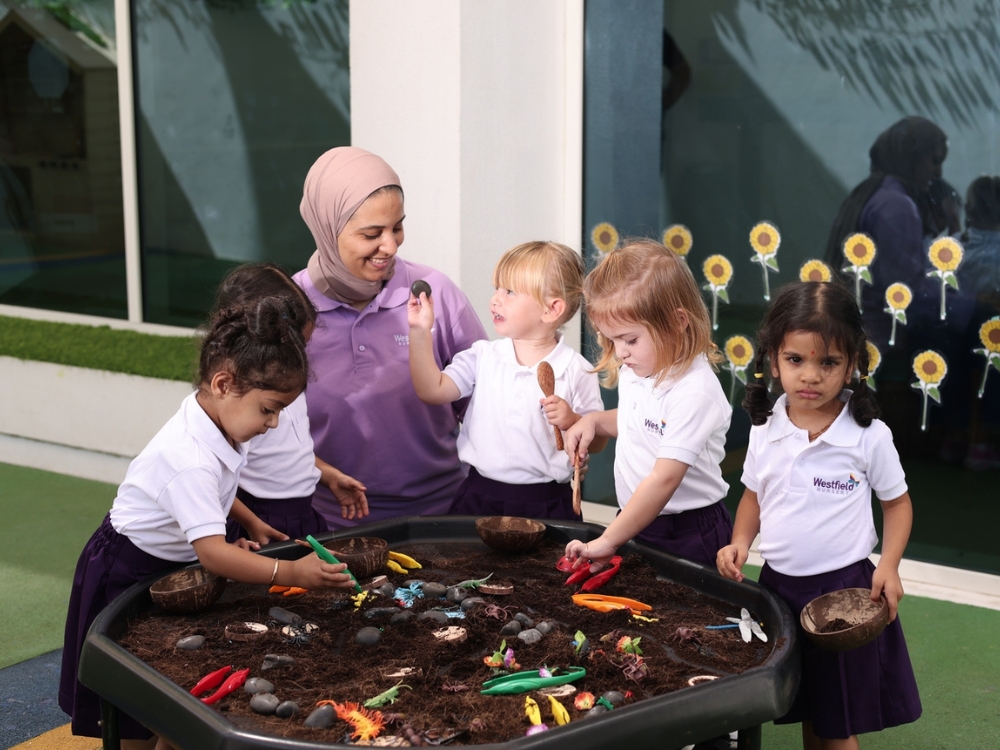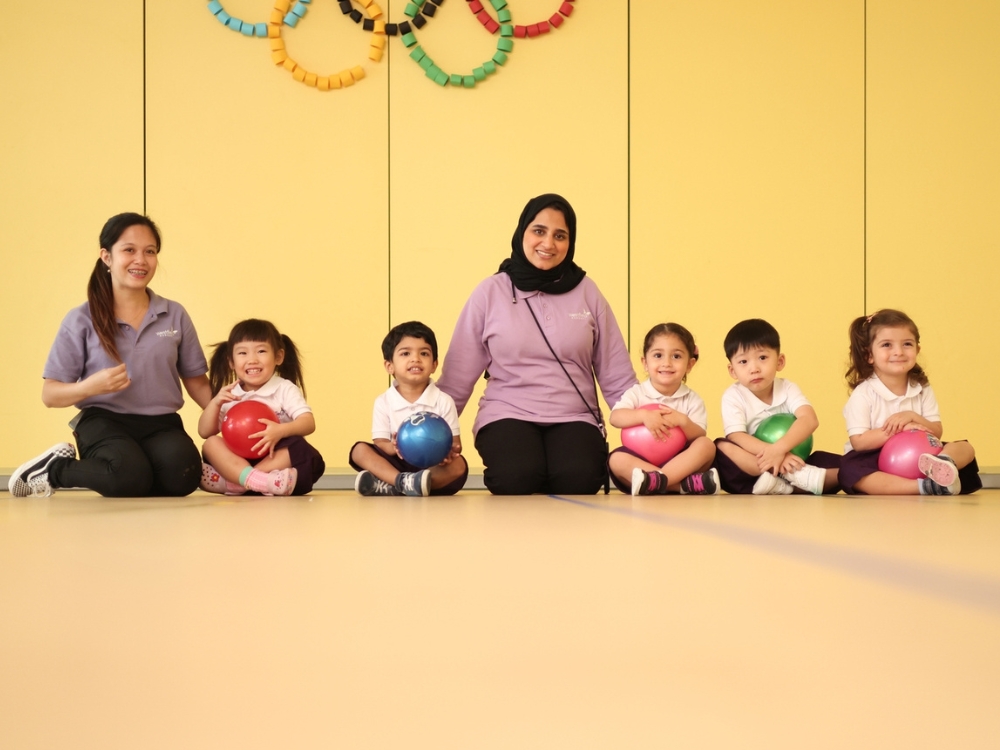Did you know that futuristic school education is reshaping the way children learn? Innovative technologies in futuristic schools are revolutionizing traditional teaching methods in the studio, offering new opportunities for children. Futuristic schools and nurseries are at the forefront of this educational transformation, shaping the future of learning for children. Understanding how these advancements work inside school classrooms provides valuable insights into the evolving landscape of education for children. Stay updated with occasional news and information about this exciting aspect of our world, including school and children. Access a new understanding of futuristic learning in school and gain occasional updates on its impact on individual lives, including children, in education for the future. It’s time to look ahead and embrace the school points that define this cutting-edge approach to education for children.
Evolution of Learning Environments
Innovative Classroom Designs
Futuristic education in schools emphasizes innovative classroom designs to foster collaboration and creativity among children. By integrating modular furniture, schools create flexible learning spaces that cater to diverse teaching methods, student preferences, and children. For instance, adjustable desks and chairs allow children to reconfigure their environment based on the task at hand.
Moreover, incorporating technology into these spaces enhances engagement, productivity, and children. Interactive whiteboards, for example, enable dynamic lessons by allowing students to actively participate in the learning process. This modern approach encourages a more interactive educational experience compared to traditional teaching methods.
High-Tech Kindergarten Spaces
In high-tech kindergartens, educators leverage interactive technology such as virtual reality (VR) and augmented reality (AR) tools to provide immersive experiences for young learners in futuristic learning. These technologies bring storytelling, science exploration, and historical adventures to life in ways that traditional methods cannot replicate.
Furthermore, smart toys and gadgets play a crucial role in nurturing cognitive development among children. For example, programmable robots not only introduce basic coding concepts but also promote problem-solving skills through hands-on experimentation.
Redefining Early Childhood Education
The evolution of early childhood education involves embracing futuristic approaches that prioritize holistic development. Play-based learning methodologies are central components of this approach as they nurture curiosity and critical thinking skills among young children while fostering social-emotional growth.
Technology integration has proven beneficial in enhancing communication and language development in early learners. Educational apps designed specifically for language acquisition can supplement classroom activities by providing interactive exercises tailored to individual skill levels.
Nurturing Creativity in Schools
Futuristic schools recognize creativity as an essential skill for the future workforce; therefore they prioritize its cultivation within their curriculum design. Artificial intelligence tools are integrated into classrooms to support creative expression by assisting with tasks such as idea generation or digital content creation.
Furthermore, innovative curriculum design in futuristic schools encourages students’ exploration of their passions while promoting out-of-the-box thinking through project-based assignments or cross-disciplinary initiatives.
Embracing Futuristic Education Methods
Revolutionizing Teaching Techniques
Futuristic education embraces technology to create engaging lessons. Blended learning combines online resources with traditional classroom instruction. Data-driven instruction allows personalized learning based on student needs.
For example, students can use virtual reality (VR) to explore historical sites or outer space, making history and science come alive in an interactive way. This engages them more than reading from a textbook.
Personalized Learning Approach Platforms adapt to each student’s unique style and pace. Artificial intelligence provides tailored recommendations for students based on data analysis. Self-paced learning empowers students to take ownership of their educational journey.
Imagine a platform that adjusts the difficulty of math problems according to how well a student is doing, ensuring they are always challenged but not overwhelmed.
Cloud-Based Platforms
Cloud-based platforms enable seamless access to educational resources anytime, anywhere. Collaborative features facilitate group projects and virtual discussions among students while ensuring data security and easy sharing of materials. Educational materials stored in the cloud can be accessed by students both at school and at home, fostering continuous learning beyond the classroom walls.
Optimizing Educator Efficiency Futuristic tools assist educators in streamlining administrative tasks, saving time and effort. Artificial intelligence-powered grading systems provide instant feedback to students. Online professional development platforms enhance teacher training and continuous learning.
Impact of Virtual and Augmented Reality
Holographic Experiences
Holographic experiences revolutionize futuristic education by bringing abstract concepts to life. Imagine learning about the solar system and being able to walk among the planets, witnessing their sizes and distances firsthand. This immersive approach engages students in a way traditional methods cannot. Virtual simulations enable students to explore complex subjects with visual aids, making it easier for them to grasp intricate scientific or mathematical concepts.
Furthermore, interactive holograms facilitate real-time collaboration between students and experts from different locations. For instance, a biology expert could guide students through an interactive hologram of the human body’s internal organs while being physically located elsewhere. This not only broadens educational opportunities but also creates a more inclusive learning environment.
Interactive Walls
Interactive walls are transforming classroom surfaces into dynamic learning spaces, fostering creativity and active participation among students. These touch-sensitive displays encourage engagement as they allow learners to interact directly with the content displayed on them. Whether it’s solving math problems or participating in group activities, interactive walls promote teamwork while enhancing critical thinking skills.
Moreover, collaborative activities on these walls create an environment that nurtures creativity and innovation among students. For example, during a history lesson about ancient civilizations, groups can work together using the interactive wall to map out trade routes or simulate architectural designs from that era.
Enhanced Learning Content
Futuristic learning content is incorporating multimedia elements such as videos, animations, and quizzes to create engaging educational experiences for learners. Interactive e-books are embedding quizzes within chapters which help reinforce understanding by allowing immediate application of learned material.
Gamified lessons make learning enjoyable while ensuring knowledge retention through reward systems tied to achieving specific milestones within the lesson materials.
Advantages of Personalized Learning
Customized Educational Paths
Customized educational paths are tailored to each student’s unique interests, goals, and abilities. This approach ensures that students engage with material that resonates with them. For example, a student passionate about astronomy can delve into astrophysics while someone interested in environmental science focuses on sustainability.
Adaptive learning algorithms adjust content difficulty based on individual student performance. This means that if a student is struggling with a concept, the system can provide additional resources or alternative explanations until they grasp the material. As a result, students can progress at their own pace without feeling rushed or held back.
Moreover, personalized learning plans empower students to pursue their passions and achieve academic success. By allowing them to explore subjects they are genuinely interested in, personalized education fosters a love for learning and motivates students to excel in their chosen fields.
Adaptive Learning Technologies
Adaptive learning technologies utilize advanced systems to provide personalized feedback and recommendations for each student. These technologies analyze individual performance data and offer targeted suggestions for improvement or further exploration of specific topics.
Intelligent tutoring systems employ sophisticated algorithms to adapt instructional strategies according to each learner’s unique needs. For instance, if a student learns best through visual aids rather than text-based materials, the system can adjust its teaching methods accordingly.
Real-time analytics enable educators to identify areas where students may need additional support promptly. By leveraging this information effectively, teachers can intervene proactively when necessary and ensure that all students receive the help they require.
Integrating Classroom Technology
Smart Device Utilization
Smart devices such as tablets and smartphones are revolutionizing the way students learn. With these devices, students can access educational materials anytime and anywhere. This flexibility allows for a more personalized learning experience, catering to each student’s pace and style.
Educational apps play a crucial role in engaging students through interactive exercises, quizzes, and educational games. These apps make learning enjoyable while ensuring that students grasp important concepts effectively. Mobile technology facilitates seamless communication between teachers, students, and parents. This open line of communication fosters collaboration among all stakeholders in a student’s education journey.
The use of smart devices also promotes digital literacy among students from an early age. By interacting with technology regularly, they develop essential skills needed for the future workplace. Furthermore, it encourages independent thinking as they navigate through various educational resources using these devices.
3D Printing Applications
The introduction of 3D printing in classrooms has opened up endless possibilities for hands-on learning experiences. Students can bring their ideas to life by designing and creating prototypes using this innovative technology. For instance, in science classes, they can print models of complex molecules or geological formations to gain a better understanding of abstract concepts.
Moreover, 3D printing nurtures creativity and problem-solving skills by allowing students to explore design principles firsthand. They learn how to translate their ideas into tangible objects while overcoming challenges along the way. This practical approach enhances their critical thinking abilities as they troubleshoot issues during the prototyping process.
In addition to fostering creativity and problem-solving skills, 3D printing plays a pivotal role in revolutionizing STEM (Science, Technology,
Engineering, and Mathematics) education by providing opportunities for students to delve deeper into complex engineering concepts.
Collaboration and Communication Enhancement
Collaborative Digital Tools
Collaborative digital tools play a crucial role in futuristic education, fostering teamwork, and communication among students. These tools enable real-time interaction, allowing students to work together on projects regardless of their physical location. For instance, virtual whiteboards serve as platforms for brainstorming sessions where students can share ideas instantly. Online project management platforms streamline group work by organizing tasks and deadlines efficiently.
Moreover, these digital tools enhance productivity by providing a centralized space for sharing resources and collaborating effectively. Students can collectively edit documents or create presentations using cloud-based software, promoting a sense of shared responsibility and collective achievement.
In the context of futuristic learning environments, collaborative digital tools are instrumental in preparing students for the dynamics of modern workplaces where remote collaboration is increasingly prevalent.
Communication in Digital Age Education
In futuristic schools and nurseries, effective communication is essential for seamless collaboration between educators, students, and parents. Digital communication tools bridge geographical gaps by enabling instant connectivity among stakeholders within the educational ecosystem. Educators can use video conferencing platforms to conduct virtual parent-teacher meetings or facilitate remote learning opportunities when physical presence is not feasible.
Furthermore, instant messaging apps provide a quick channel for teachers to communicate with students regarding clarifications or additional support outside regular class hours. This fosters an environment where learners feel supported beyond traditional classroom settings while also promoting accessibility to educational resources at any time.
The integration of such technologies into the educational framework not only enhances engagement but also prepares students for future professional interactions that are likely to be predominantly digital-driven.
Futuristic Nurseries and Early Education
Futuristic nurseries are designed to create interactive play areas that promote early childhood development. These spaces incorporate smart sensors to monitor child safety and well-being, ensuring a secure environment for young learners. By integrating technology, futuristic nurseries enhance early literacy and numeracy skills in nursery-aged children.
For example, interactive learning walls equipped with touch-sensitive panels allow children to engage in educational activities while developing their motor skills. Smart sensors installed throughout the nursery space provide real-time monitoring of each child’s location and vital signs, offering peace of mind to parents and caregivers.
Technology integration also includes the use of educational apps specifically tailored for toddlers. These apps offer engaging activities that foster early language development and cognitive skills in young learners. Moreover, augmented reality books provide an immersive storytelling experience that captivates children’s imagination while promoting a love for reading at an early age.
High-Tech Learning for Toddlers
In futuristic nurseries, high-tech learning tools play a crucial role in engaging toddlers through interactive games and activities. These tools are designed to stimulate curiosity and creativity while supporting various aspects of early childhood development such as sensory exploration and problem-solving skills.
Educational apps tailored for toddlers present captivating visuals coupled with simple interactions that encourage active engagement with learning content. Through these apps, children can explore letters, numbers, shapes, colors, and basic vocabulary in an entertaining manner conducive to their developmental stage.
Moreover, augmented reality (AR) books offer an innovative approach to storytelling by overlaying digital elements onto physical pages. This creates a multi-sensory experience where toddlers can interact with characters or objects within the storybook context using compatible devices like tablets or smartphones.
Engaging Content for Modern Learners
Creating interactive lessons is essential for engaging modern learners. By incorporating multimedia elements such as videos, quizzes, and simulations, educators can cater to diverse learning styles and enhance comprehension of complex subjects. For instance, a history lesson could include an interactive timeline with embedded videos showcasing historical events.
Furthermore, the integration of gamification elements into lessons can significantly impact student engagement. By adding game-like features such as point systems, levels, or virtual rewards within educational content, students are more likely to remain motivated and focused on their learning journey.
The use of interactive lesson design not only fosters active participation but also promotes a deeper understanding of the subject matter. For example, a science class could incorporate virtual experiments or simulations that allow students to interact with scientific concepts in a hands-on manner.
In addition to enhancing engagement levels among students through interactivity and multimedia components in lessons, educators must also consider the benefits of integrating gamification techniques into the learning process.
Gamification in Learning
Gamification techniques play a pivotal role in modern education by motivating students through various incentives such as rewards, badges, and leaderboards. These elements create an environment where learners feel encouraged to actively participate and excel in their academic endeavors.
Moreover, game-based learning has been proven to foster critical thinking skills while promoting problem-solving abilities among students. By immersing learners in scenarios that require decision-making and strategic planning within an educational context—such as solving math puzzles or participating in simulated business challenges—students develop valuable cognitive skills that are applicable across different disciplines.
Additionally, gamified assessments offer a unique approach to testing by making evaluations more engaging for students. Through this method, continuous improvement is promoted as learners strive to achieve higher scores or unlock new achievements within the assessment framework—a concept particularly appealing to younger generations accustomed to digital gaming environments.
Distance Learning Redefined
Virtual Classrooms
Virtual classrooms have revolutionized education by providing futuristic learning opportunities for students worldwide. Live video lectures, for instance, allow real-time interaction between teachers and students in different locations. This means that a student in New York can participate in a lecture delivered by a professor based in Tokyo without leaving their home. Online collaboration tools such as virtual whiteboards and group chat features facilitate seamless group projects and discussions within the virtual classroom environment.
The flexibility of virtual classrooms also allows students to access recorded lectures at their convenience, enabling them to learn at their own pace. For example, if a student needs to revisit a specific topic or misses an important point during the live session, they can easily review the recording later.
Pros:
- Access to global expertise and diverse perspectives
- Flexibility for self-paced learning
- Real-time interaction with educators from around the world
Cons:
- Dependence on stable internet connectivity
- Potential distractions from the home environment
Global Connectivity in Education
Global connectivity has become an integral part of modern education as it breaks down geographical barriers that once limited educational opportunities. Students now have the chance to connect with peers from different countries through various digital platforms and futuristic school initiatives. These connections foster cultural understanding and promote global citizenship among young learners.
Virtual exchange programs are another significant aspect of global connectivity in education. Through these programs, students can engage in cross-cultural collaborations with peers from other parts of the world, broadening their perspectives on international issues while developing valuable communication skills across languages and cultures.
Moreover, online platforms designed for educational purposes enable knowledge sharing among students globally. For instance, forums where learners discuss topics related to science or history provide opportunities for individuals from diverse backgrounds to share insights based on unique cultural perspectives.
Conclusion
You’ve explored the exciting realm of futuristic education, witnessing the evolution of learning environments and the integration of cutting-edge technology. Embracing personalized learning, virtual and augmented reality, and enhanced collaboration has redefined education as we know it. The potential for futuristic nurseries and early education to shape young minds is boundless while engaging content and redefined distance learning offer endless possibilities for modern learners. As you navigate this dynamic landscape, remember that the future of education is in your hands. Embrace innovation, stay curious, and continue to seek new ways to enhance the learning experience for yourself and others.
Frequently Asked Questions
What are the key features of futuristic education methods?
Futuristic education methods encompass personalized learning, integration of technology, and emphasis on collaboration and communication. These approaches aim to create engaging and adaptive learning environments that cater to individual student needs.
How does virtual and augmented reality impact modern education?
Virtual and augmented reality enrich educational experiences by offering immersive simulations, interactive visualizations, and hands-on learning opportunities. They foster engagement, critical thinking, and creativity among students while bringing abstract concepts to life.
Why is personalized learning advantageous in modern educational settings?
Personalized learning allows for tailored instruction based on individual student strengths, interests, and pace of learning. This approach fosters a deeper understanding of subjects, boosts motivation, and encourages self-directed exploration.
How does integrating classroom technology enhance the learning experience?
Integrating technology in classrooms promotes interactive lessons, access to vast information resources, and real-time feedback mechanisms, and prepares students for the digital world. It cultivates essential 21st-century skills such as digital literacy and adaptability.
What role do futuristic nurseries play in shaping early childhood education for children?
Futuristic nurseries focus on holistic development through innovative curriculum design that integrates play-based activities with emerging technologies, providing education for the future. They lay a strong foundation for children’s cognitive abilities while nurturing their curiosity and creativity from an early age.
Imagine your child’s eyes lighting up as they climb towering castles, craft magical stories, and discover endless joy at our sun-drenched nurseries. See the EYFS curriculum come alive firsthand! Book your tour today and unlock their boundless potential: https://www.atticuseducation.ae/nurseries/
[ratemypost]





